Death Stranding 2: On The Beach Review - The Road More Travelled
Hideo Kojima’s latest undermines its strongest aspects in the name of ease and bombast, resulting in a deeply frustrating experience.
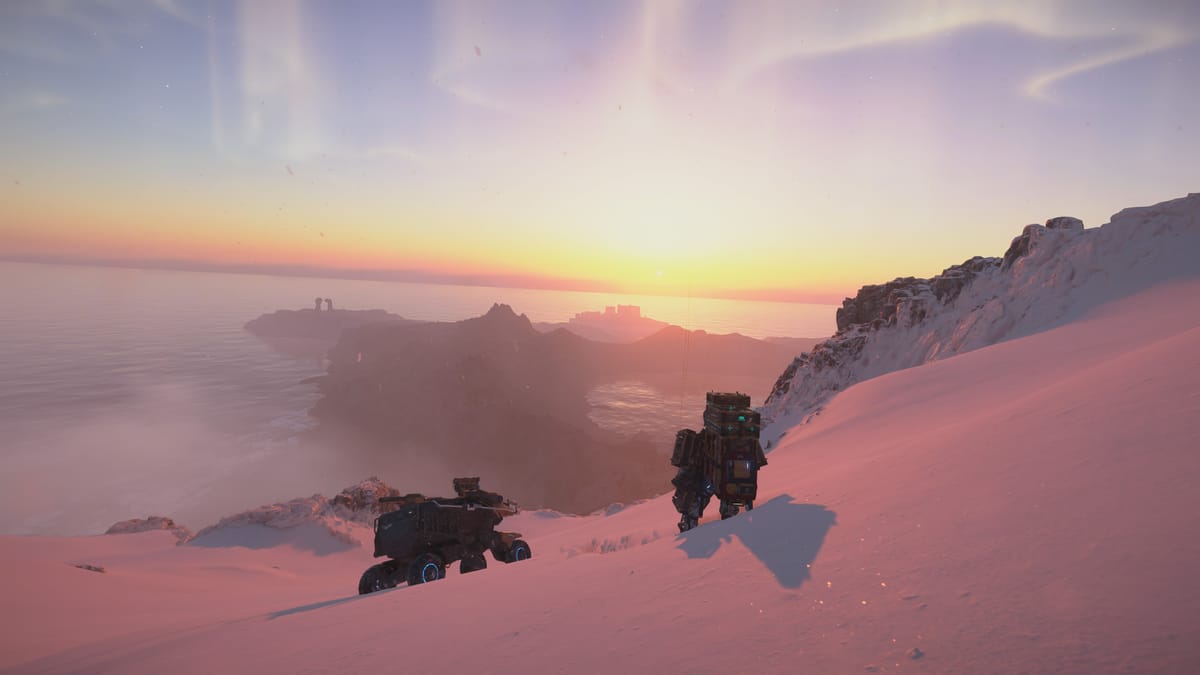
Spoilers throughout
Raindrops Keep Fallin’ On My Head
I really like walking. I am not joking. I walk everywhere; I don’t own a car and the places that I’ve lived over the years are primarily in and around very walkable cities. As someone who’s had a pretty tumultuous relationship with high-impact exercise, walking has basically become my entire fitness routine. I go for a walk when I need to clear my head, listen to a podcast, or get a cup of coffee. My day feels incomplete if I don’t get out for at least an hour and just keep putting one foot in front of the other.
Death Stranding 2 does not love walking. Which is a weird thing to say. After all, that first game and this game really are both games about walking across entire contents to connect people. They are games about a man performing one of the most basic human activities to enable the most desired human activity - socialising. In fact, Death Stranding 2 goes out of its way in its final hours to outline how movement and migration are the foundation of human and personal evolution - how we move on.
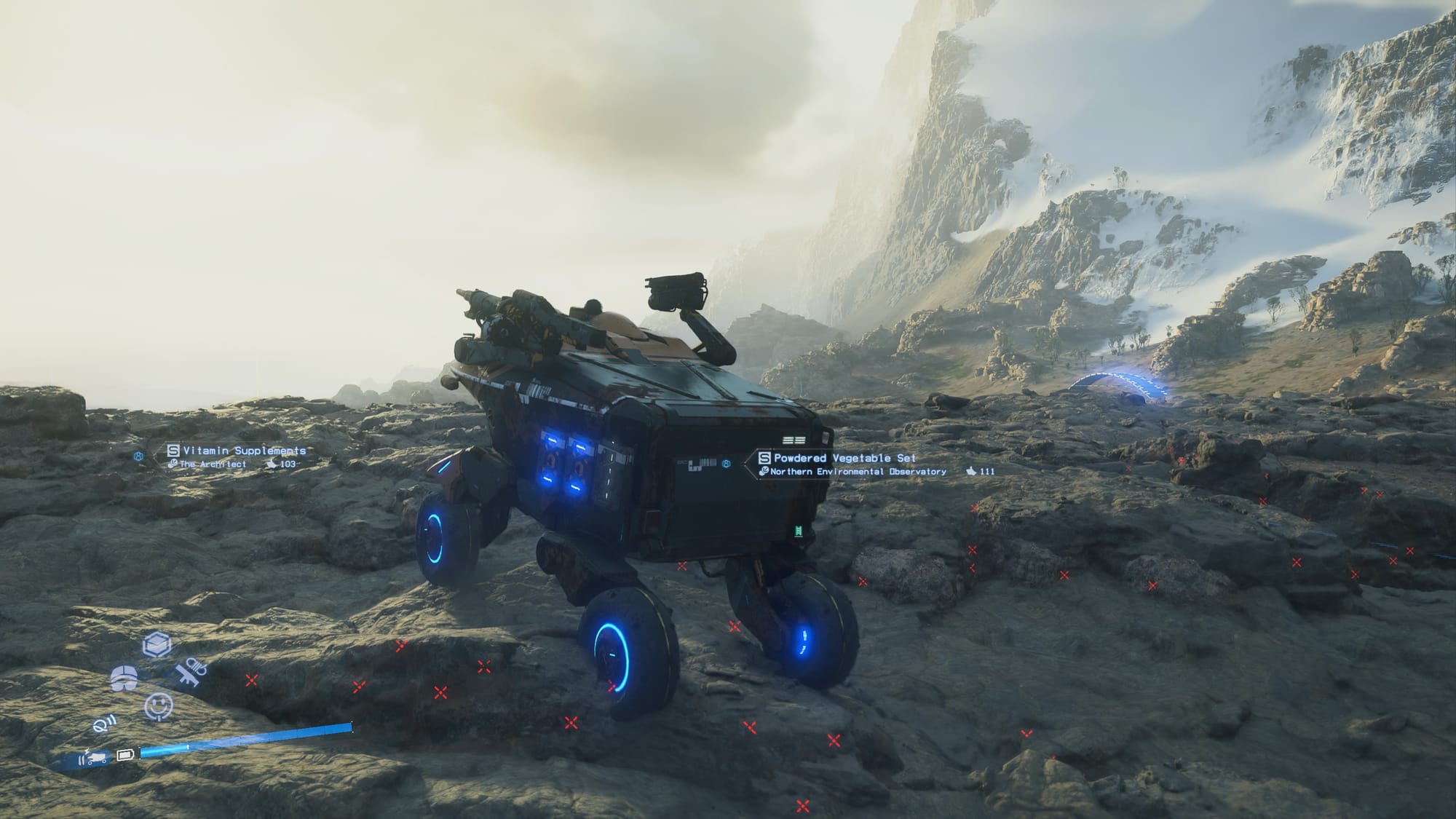
The problem is that Death Stranding 2 – like with many of its themes and ideas – doesn’t seem very interested in depicting the ideas it proclaims as important for very long. Within about four or five hours of playing Hideo Kojima’s celebrity-ridden tale of loss, you’ll be given access to a trike, and then a truck, and a coffin skateboard (don’t worry about it) – and once you gain access to these tools, you’ll hardly walk anywhere anymore. You could just keep walking from outpost to outpost; there is nothing stopping you, but why would you? It takes longer, and you can carry less, and so much of the gameplay reward structure is built around delivering as much as you can at one time. Min-maxing travel, automating the journey, and stopping walking.
There are a few late-game areas that have extremely rocky terrain, which might force you to go on foot for a delivery or two, but most of these orders are capped off with a reward that makes your vehicles more capable of traversing the terrain that is such a joy to walk through. The characters of Death Stranding 2 tell you that all humans need to engage themselves in the act of moving, that it is part of human nature, yet so much of the game is about finding ways to circumvent the most enjoyable form of movement.
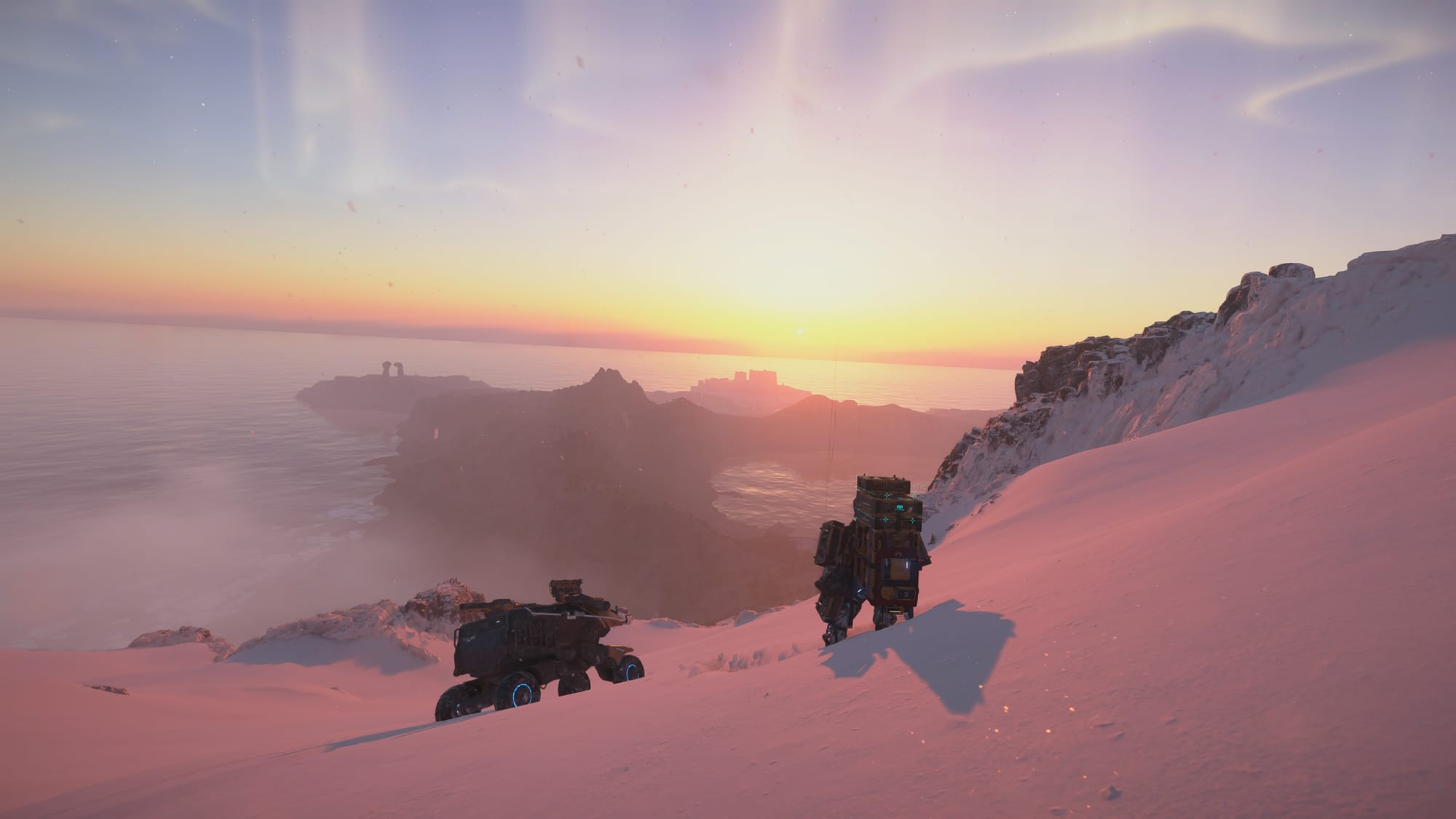
Like the first game, Death Stranding 2 has a killer licensed soundtrack; these songs are usually used as needledrops at the end of longer orders as you approach outposts. While these moments work to punctuate missions for the first few hours, the effectiveness falls off if you are driving a truck (which you likely are), you’ll probably reach your destination before a song’s chorus kicks in. These problems come hand in hand with the biggest change for this sequel, which is that Death Stranding 2 is actually a very traditional sequel in a way that few Kojima games are.
Asylum For The Feeling
The changes in the tone and gameplay between each Metal Gear are famously noticeable. For the love of god, Metal Gear Solid 4 and 5 feel like they are carved from entirely different game design philosophies. MGS2 spent years-long marketing campaign trying to convince you it was a traditional sequel, taking everything you loved about the first game and making it bigger and better, only to pull the rug out from under you with a protagonist switch.
Death Stranding isn’t like that; instead, it feels like the logical follow-up to Death Stranding Director’s Cut, which was the follow-up from the original release. Each iteration slowly massaging out certain pain points, until there is no feeling left in the experience. All the biggest changes are things that either the first game or the Director’s Cut were widely criticised for. Cargo management is massively streamlined, as are menus, while the story is made more palatable thanks to a compendium of terms breaking down the proper nouns and wild names. The depth and frequency added to combat encounters may be the biggest change. It’s a logical progression from each game to the next, which is so strangely un-Kojima who has spent almost four decades priding himself on subversion, it feels exceptionally safe. For as much as Kojima talks about how he wants his games to be divisive, Death Stranding 2 seems strangely obsessed with sanding off the rough edges that some found polarising, and others felt made it interesting.
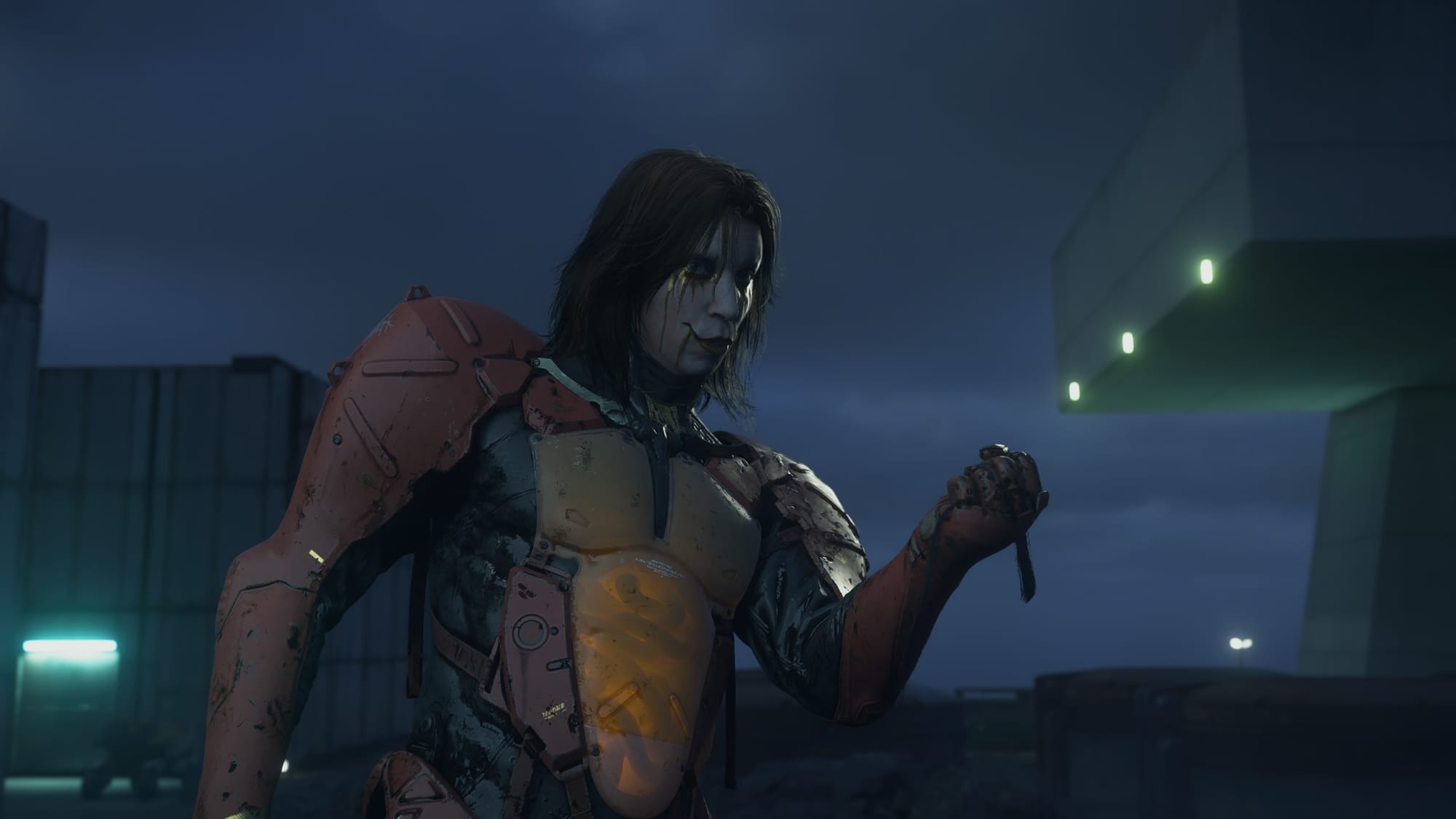
This isn’t an overtly bad thing. I am very glad I can skip most delivery drop-off cutscenes by holding down a single button press and not having to pause the game and skip each part of the animation separately. However, between the countless combat tools at your disposal (and Sam’s apparent proficiency with grenade launchers) and the deluge of player-built vehicles that spawn in your world, Death Stranding 2 feels weirdly easy. Moving around the world of Death Stranding has never been easier; bosses rarely pose a threat as long as you have a bunch of blood packs, and once you realise that going loud with your rubber bullet guns is infinitely easier than engaging with stealth, outposts become a breeze. The result is something that feels very un-Death Stranding. Getting from point A to B is no longer a grand trek with a myriad of challenges; it's a casual jaunt where almost all your deliveries will be rated “S” and you’ll hardly ever even fall over.
While the prevalence of combat and the ease of traversal might feel counter to the tone and universe of Death Stranding, it is hardly the most acute thematic mismatch at the heart of the game.
The Bride & The Bachelor
My biggest point of contention comes from the game’s lavish cutscenes. These cutscenes look amazing - the whole game does - but what’s more, they look cinematic. Kojima, the film fan, is stretching his filmmaking muscles with Death Stranding 2 more than he ever has. Almost every cutscene has some thoughtful framing, interesting camera movement, or subtle use of lighting. A notable example comes early on when Fragile races through the desert on a single-wheel bike and there is this brief shot from the perspective of a camera attached to the handlebars, looking up at her. The way Death Stranding 2 forces itself to act like there is actually a camera or lighting equipment on set gives these scenes a physicality we rarely see in games. However, the problem is that these scenes also feel amateurish. And that is mainly down to Kojima, the video game writer, casting director and voice director, struggling to keep up with Kojima, the cinephile.
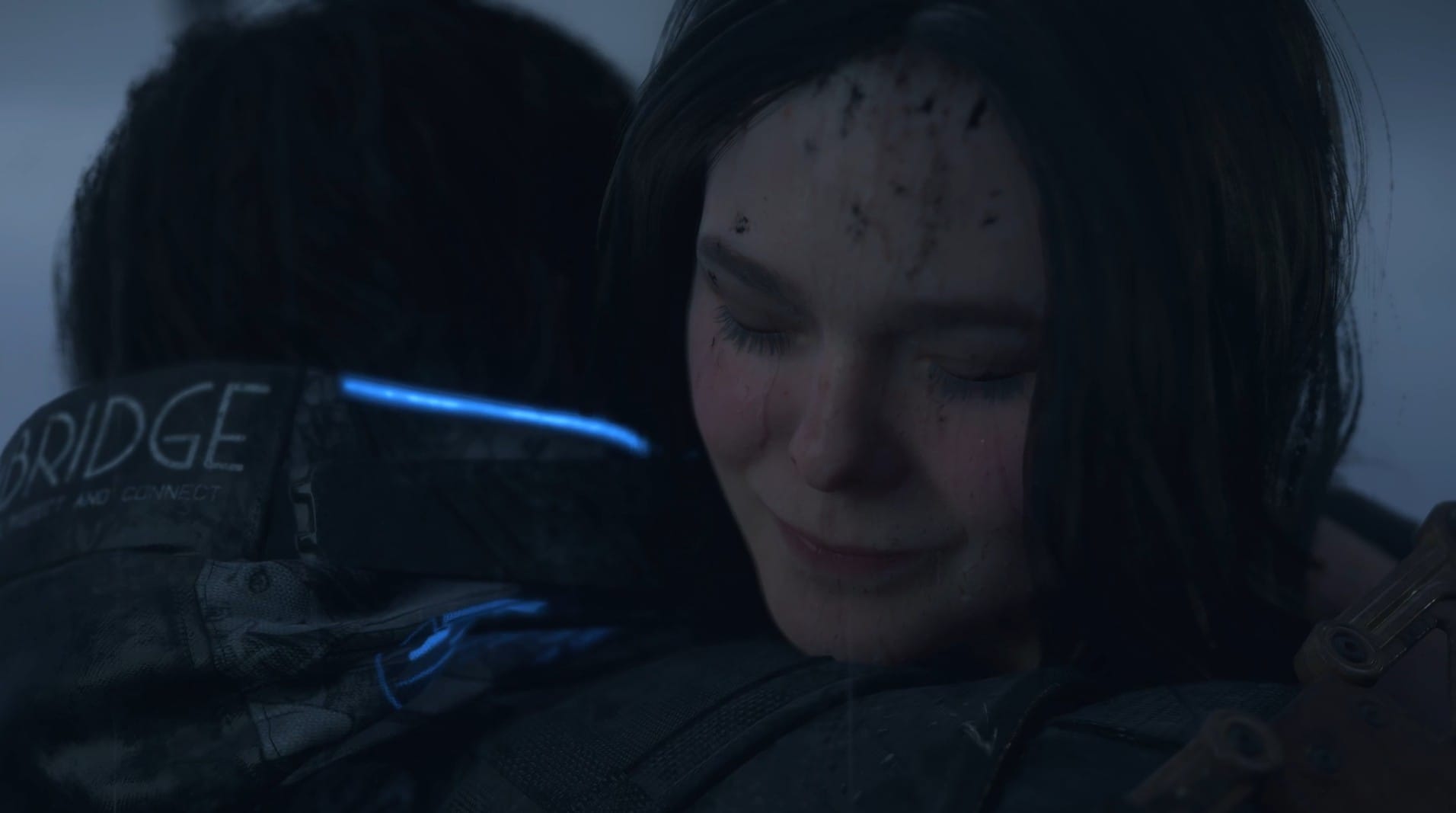
I have no problem with film actors in games. In fact, I think Luca Marinelli gives a terrific and understated performance in his scenes in this very video game. However, it is the rest of the Hollywood cast where these scenes start to fall apart. They are all so nice and polite to you constantly. This might seem like a strange complaint; but after Sam does anything in this game, you’ll hear Lea Seydoux, Elle Fanning, or Shioli Kutsuna tell you how great you are and how only you could walk from one place to another. On top of this, no character ever doubts Sam’s judgement on anything, or questions why he can be so cold; they just support him. Whatever Sam is going to do will be the right thing.
I have seen some people point out that this could be a deliberate writing choice, meant to show how the crew of DHV Magellan are walking on eggshells around the mourning father, which I can kinda see. However, the voice direction seems totally at odds with this reading, as characters seem to be near-emotionless in their deliveries 90% the time. Whether it's because they aren’t that interested in the material, don’t understand it, or were just directed that way, pretty much every core cast member – bar the delightfully exuberant Dollman – are almost monotone in their flatness as they tell you how awesome a job you did. It feels like you took the moody isolationist tone of the first game, and blended it with the “putting a crew together” found family narrative of something like Mass Effect 2 for a story that is constantly conflicting its own vibe.

The result is a very uneven atmosphere, which ultimately reads as female actors Kojima really likes telling his perfect protagonist how great he is constantly, and it's super weird, man.
Just How It Goes
I find it hard to feel positive about almost any of the characters or arcs in Death Stranding 2, because ultimately, even the moments that do hit are liable to be undercut by the needs of the plot (or a potential sequel). By my count over the course of about 45 hours, four main cast members who seemingly die (in the first game or during this one) come back to life, including a character whose death is the basis for not only the entire plot, but also Sam’s grief and his character arc. So by the time we get to the final showdown and a different main character dies tragically, I am kind of just sat there asking myself, “So what?” because they’ll probably be back for Death Stranding 3.

Even a character I really want to, Dollman, is hard to engage with once you realise that his entire purpose narratively is to recap and condense what Sam just saw in a cutscene in case the player stopped paying attention. There is a cutscene where Sam walks past Tomorrow on the DHV Magellan holding an apple, she stares at it for a bit, and then it quickly withers and dies in her hands, Sam nods to her and walks away. We have been shown before that she has powers similar to timefall and we know the team wants her to work for them, but the we get outside and Dollman has about three or four lines spelling out that she is practising her powers, but still doesn’t have full control of them, and we should be supportive of her – as if that isn’t something I could tell from just seeing what I saw.
If the first Death Stranding was guilty of not properly explaining its plot points unless you read every email in Sam’s spam folder, Death Stranding 2 is guilty of having basically no faith in the player to be able to analyse any subtext or, in some cases, just text.
Sayonara
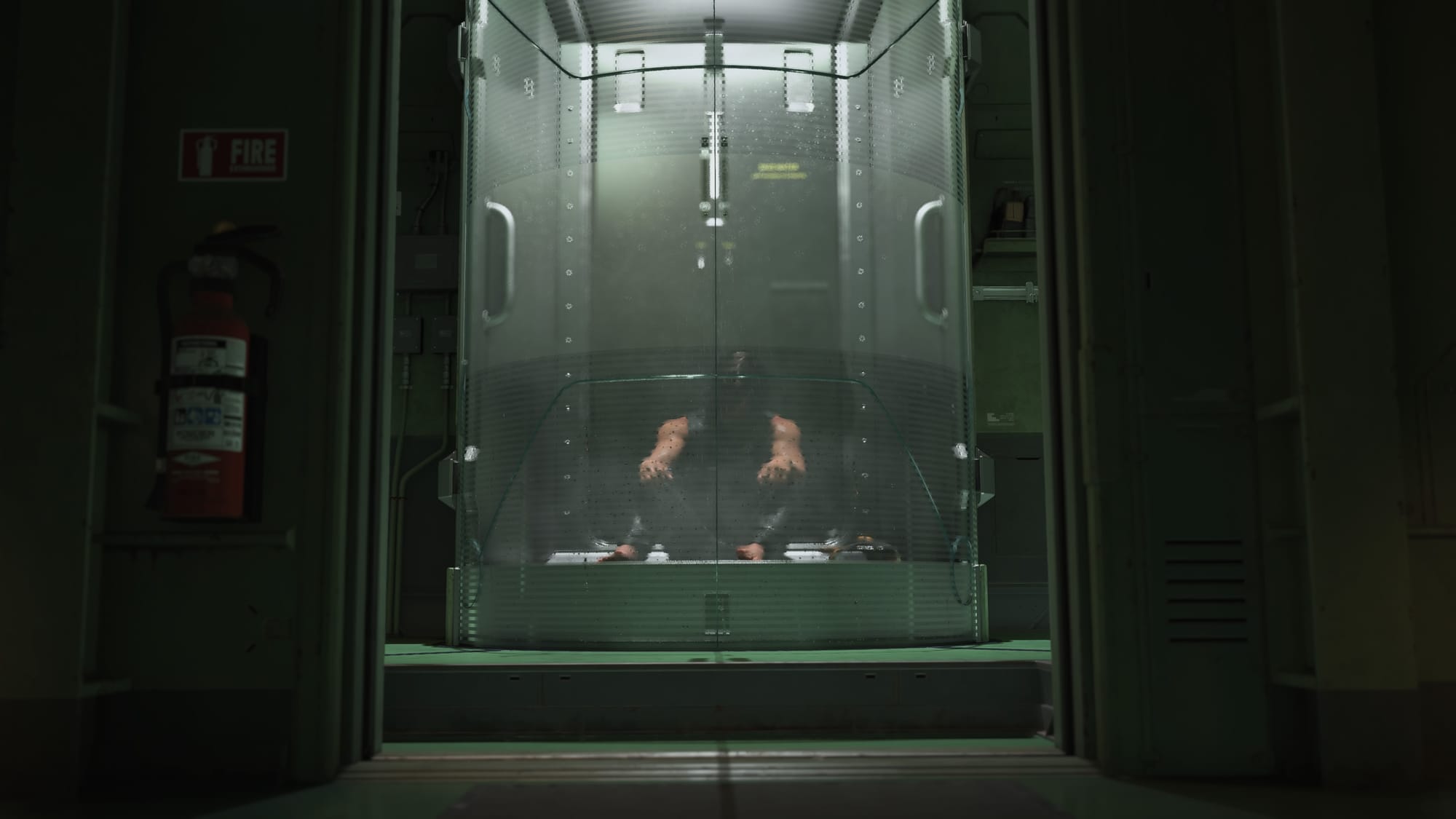
And all this is a massive shame because there are moments when Death Stranding 2 clicks. When Sam is wandering in silence, Low Roar kicks in, and it's just you and the terrain and your legs taking it one step at a time. In fact, there were times near the end when I started getting out of my truck at the end of journeys just so I could revel in these moments for a little longer. There are moments when Death Stranding 2 loves walking as much as the first game did. But then it remembers it's a sequel, and the action returns and the bombast explodes in your face and the joy of walking fades into the distance.
Score: 5/10
Death Stranding 2 was reviewed on PS5, and a review code was provided by the publisher. It is out now.
Rewinder uses a 10-point scoring scale in our reviews, and we've detailed our review scoring policy here for more information.


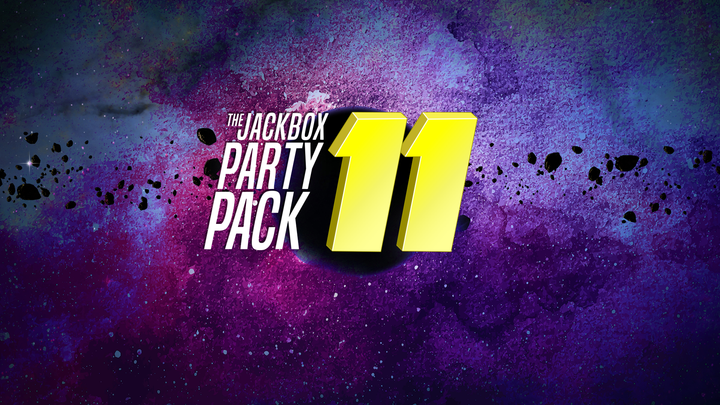
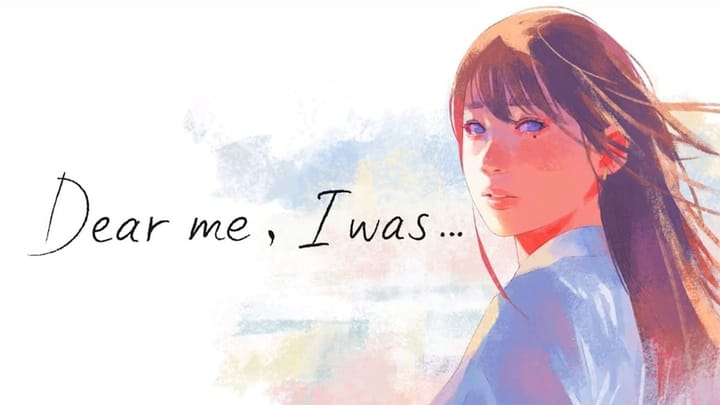
Comments ()